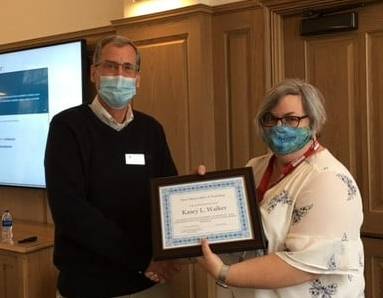Our Goal
Our goal is to train peer observers to improve teaching, document effectiveness, and
create a community of practice.
Schedule a Peer Observer
These faculty members have completed the peer observation training and are willing
to do scheduled peer observations. You should contact them directly to ask whether
they have openings to do a peer observation. Since they are observing your teaching
and not evaluating course content, it is not necessary to pick an observer from your
area of expertise.
Mindy Bradley, Sociology and Criminology, mwbradl@uark.edu
Deb Korth, Student Success and Math, dkorth@uark.edu
Heather Walker, Chemical Engineering, hlw@uark.edu
Kasey Walker, Communication, klwalker@uark.edu
Carl Smith, Architecture, cas002@uark.edu
Peggy Lee, School of Nursing, pblee@uark.edu
Manuel Rossetti, Department of Industrial Engineering, rossetti@uark.edu
Samantha Robinson, Data Science, sewrob@uark.edu
Carole Shook, Information Systems, CShook@walton.uark.edu
Faith Lessner, Biological Sciences flessner@uark.edu
Margaret Butcher, Communication mbutcher@uark.edu
Don Johnson, Agricultural Education, Communications, and Technology, dmjohnso@uark.edu
Richard Cassady, Industrial Engineering, cassady@uark.edu
Christine Ralston, Curriculum and Instruction, cralston@uark.edu
Why Peer Observation?
-
- Faculty discontent with Student Evaluation of Teaching
- Faculty should provide additional items (beyond student evaluations) to document teaching.
AP 1405.11 (F.1. Criteria for Faculty Performance)
- Improve teaching by:
- Engaging in non-judgmental, constructive dialogue between peers
- Engaging in self and mutual reflection about teaching practices
- Exposure to different teaching perspectives and practices
- Document teaching effectiveness through:
- Classroom observation by respected peer(s)
- Written observation report
- Create a voluntary Community of Practice by:
- Breaking down disciplinary silos
- Making teaching a “public” practice
- Providing opportunities for conversations about teaching and learning
- Providing a community of peer observers
Features of Peer Observation
-
- Voluntary
- Confidential (The person observed is given the report and they can decide how to use
the information)
- Peer-to-Peer
- Cooperative, not evaluative
- Formative, not summative
Our Peer Observation Model
Step One: Pre-Observation Meeting
- Informal/In-person
- Develop rapport
- Provide mutual understanding of peer observation process
- Learn about course and students
- Discuss instructor’s specific goals for the peer observation
- Schedule date/time/location
- Determine topic and instructor goals for class session
Step Two: Classroom Observation
- Observer arrives early / sit in back of classroom
- Complete “Peer Observation of Teaching” Timeline form
- Observer pays special attention to:
- Instructor identified goals
- Students engagement and interaction
- Understanding
- Instructor clarity
- Rapport/Respect
- Management/Support of learning
Step Three: Post Observation Discussion and Report
- Observer prepares observation summary for discussion
- Meets with instructor to discuss observation summary
- Emphasizes positive points
- Offer non-judgmental suggestions
-
- “What would happen if . . . ?
- Incorporates feedback into written summary
- Writes/delivers written summary document
Get Trained
Sign up to let us know that you are interested in being trained as a peer observer.
Watch for upcoming programs on peer observation of teaching.
We will have one per semester.
|
